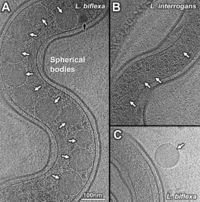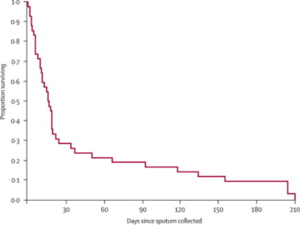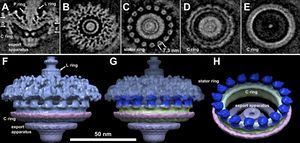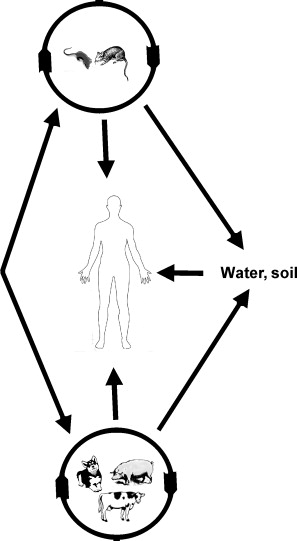Leptospira Species in the Environment: Difference between revisions
From MicrobeWiki, the student-edited microbiology resource
No edit summary |
No edit summary |
||
| Line 11: | Line 11: | ||
[[Image:Transmissionimage.jpg|thumb|300px|right|Transmission of Leptospirosis between animals and humans.]] | [[Image:Transmissionimage.jpg|thumb|300px|right|Figure 5.Transmission of Leptospirosis between animals and humans.]] | ||
<br>Introduce the topic of your paper. What microorganisms are of interest? Habitat? Applications for medicine and/or environment?<br> | <br>Introduce the topic of your paper. What microorganisms are of interest? Habitat? Applications for medicine and/or environment?<br> | ||
Revision as of 01:01, 23 April 2014
Introduction

Figure 2.The outer membrane (Om), inner membrane (IM), peptidoglycan layer (PG), and periplasmic flagellum (PF) in a 3-D reconstruction of intact L. interrogans (A) and L. biflexa (B).Zoom-in views reveal the detail of the cell envelope of L. interrogans (C) and L. biflexa (D). Panels E and F show the density profiles of L. interrogans and L. biflexa, respectively.
By Toni Miller

Figure 4. Two types of spherical bodies in Leptospira spp. High and low density spherical bodies were labeled with dark and white arrows, respectively. (A) Cryo-ET tomogram slice of an L. biflexa cell, with spherical bodies (`100nm) located in the cell center. (B) Cryo-ET of an L. interrogancs cell shows that the spherical bodies are randomly positioned along the cell body, with a diameter of `30 nm. (C) High-magnificatoin view of a spherical body showing the absence of a phospholipid bilayer.
Introduce the topic of your paper. What microorganisms are of interest? Habitat? Applications for medicine and/or environment?
Section 1
Include some current research, with at least one figure showing data.



